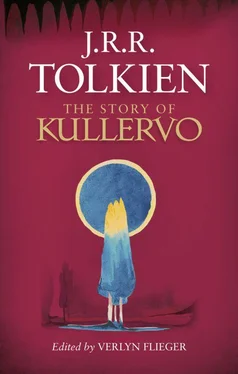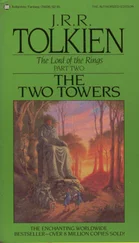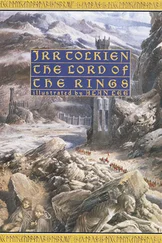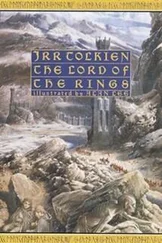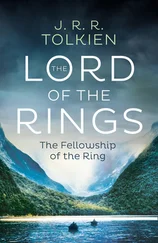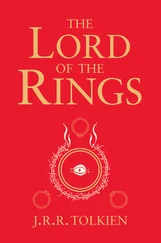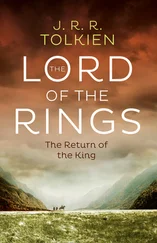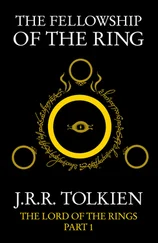First, Kullervo’s family. One of the problem points in the Kalevala story is that Kullervo has two families and becomes an orphan twice. His first family is destroyed by Untamo in the raid that captures Kullervo’s mother. The narrative is clear at this early point in the story that this is a near-complete massacre, leaving the newborn boy with no home, no father, and no living relatives besides his mother, who like him is a slave and of little help or support. It is thus confusing to most readers when much later in the story a second family in a different household turns up, before the incest but after Kullervo kills the smith’s wife. He is at that point told, to his and the reader’s surprise, that his family is alive. The thematic justification for this second appearance is that it gives him a set of relatives — another father and a new-found brother and sister — whose job is to tell him in elaborate verse how much they don’t care whether he lives or dies, thus reinforcing the feelings of alienation and rejection he’s already got from Untamo and the smith’s wife. The plot function is to provide Kullervo with a sister that he has never seen and so set the stage for the incest.
According to Domenico Comparetti, one of the earliest scholars to write on Kalevala , the two-family mix-up is the result of Lönnrot’s combining into one sequence several songs originally independent of one another. Comparetti pointed out that, ‘Kullervo’s finding his family at home after they have been killed by Untamo, is a contradiction that betrays the joining together of several runes’ (Comparetti, p. 148), runos not even from the same localities, and with differing variants (ibid., p. 145). The confusion is not unlike the two Brynhilds mix-up in the Völsung story. Lönnrot may have been juggling his material, but he had precedents. In these earlier versions, the hero’s name is not always Kullervo; in Ingria it is Turo or Tuirikkinen, in Archangel and Karelia it is Tuiretuinen (Comparetti, pp. 147–48). There is no hard evidence that Tolkien had read Comparetti, though it seems probable given his fascination with Kalevala , and his discussion in the two College talks of the geographical range of Lönnrot’s collecting is most likely drawn from Comparetti. But it was the effect of Kalevala ‘as is,’ not its history of composition or its component parts which so engaged Tolkien. His quote from George Dasent that, ‘We must be satisfied with the soup that is set before us, and not desire to see the bones of the ox out of which it has been boiled’ ( The Monsters and the Critics and Other Essays , p. 120), was as applicable to Finnish mythology as to fairy-stories.
Tolkien ignored the bones, eliminating the second family altogether and giving the first family those extra children, an older brother and sister already in place before Untamo’s raid. Their mother, pregnant again at the time Untamo attacks, gives birth to twins after she is abducted by Untamo. These are a boy whom she names Kullervo, or ‘Wrath’, and a girl she names Wanōna, or ‘Weeping’. The pre- and post-Untamo sets of children are not close in either age or temperament, and the older set is hostile to the younger, paving the way for their later rejection of Kullervo. When he is sold into slavery his older brother and sister both tell him — in long lines of verse — how much they won’t miss him. His exile separates him both geographically and emotionally from his mother and sister, so that when he meets Wanōna again we can accept it as reasonable that he fails to recognize her.
Second, Kullervo’s relationship with his sister. In Kalevala he has none, and because of the two-family combination he meets her for the first time on the occasion of the incest. Tolkien considerably expands and complicates this relationship, building up the childhood closeness of the twins and emphasizing their alienation from their older siblings and their consequent reliance on one another. Kullervo and Wanōna spend more time with each other than with anyone else. They are neglected ‘wild’ children who roam the woodlands, their only friend the hound Musti, a dog with supernatural powers who acts as both companion and protector. When Kullervo is sold into slavery by Untamo, he is followed by Musti, but cut off from his family. He declares that he will miss no one but Wanōna, yet in his exile he forgets her entirely, and fails to recognize her when by accident they meet again, with fatal consequences.
Third, Kullervo’s personality and appearance. Again, in Kalevala there is none, or very little. His characteristics in the Finnish epic are precocious strength and an aptitude for magic. Barely three days old, he kicks his cradle to splinters. Set to rock an infant not long afterward, he breaks the baby’s bones, gouges out his eyes, and burns his cradle. In addition, he is apparently indestructible, for Untamo has three tries at killing him, first by drowning, next by burning, and finally by hanging. Nothing works. He survives the drowning and ‘measures the sea.’ He escapes the burning and plays in the ashes. He is found on the hanging tree carving pictures in the bark. Set to clear a field he creates a wasteland; told to build a fence he makes an impenetrable enclosure with no way in or out; assigned to threshing grain he reduces it to dust. No reason or motive, except that he was rocked too hard as a baby, is given for this extreme behavior. It’s just the way he is. You can’t take him anywhere. Rather oddly, he is also handsome and a bit of a dandy, described as having ‘finest locks of yellow colour’, ‘blue-dyed stockings’, and ‘shoes of best of leather.’
Tolkien’s Kullervo is equally strong, but far from handsome or fashionable. He is ‘swart’ and ‘ill-favoured and crooked’, low in stature, and ‘broad and ill knit and knotty and unrestrained and unsoftened.’ Yet we come to understand him and even feel sympathy for him. The big difference between Tolkien’s Kullervo and the one in Kalevala is that while their actions are the same (both do all the weird things I’ve described), Tolkien’s Kullervo is clearly marked and motivated by early trauma. He is scarred by his father’s murder and embittered by his and his mother’s enslavement and cruel treatment by Untamo. He grows crooked for lack of a mother’s care. Tolkien portrays him as sullen, resentful, angry, and alienated, close only to his sister Wanōna and the hound Musti. ‘No tender feelings would he let his heart cherish for his folk afar.’ He nurses grudges, he’s lonely and a loner, a perpetual outsider, one of those people forever on the fringe of society unable or unwilling to fit in. Among Tolkien’s many characters Kullervo stands out for his emotional and psychological complexity, exceeded only by an equivalent or greater complexity in his direct literary descendant, Túrin Turambar.
Fourth, his dog. There is no such supernatural animal as the great hound Musti in this part of Kalevala , though there is a back dog called Musti (which simply means ‘Blackie’ in Finnish) who after the second family has all died follows Kullervo into the forest to the place where he kills himself. In contrast, Tolkien’s Musti is a significant character in the story, and plays an active part in several episodes. He initially belongs to Kalervo, and on the occasion of Untamo’s raid, returns to the homestead to find it destroyed, his master killed and his wife, the lone survivor, captured. He follows her, but stays in the wild, where he becomes the friend and mentor of her two children Kullervo and Wanōna, and is associated with the dog of Tuoni, Lord of Death. Tolkien is tapping in to a standard mythological convention here, the connection between dogs and death and the underworld, which, although Musti is not the dog of Tuoni, nevertheless foreshadows by his presence the tragedy to come. While not of the underworld, Musti is described as ‘a dog of fell might and strength and of great knowledge’. He is a shape-changer and a practitioner of magic which he passes on to Kullervo, instructing him in ‘things darker and dimmer and farther back even… before their magic days’.
Читать дальше
